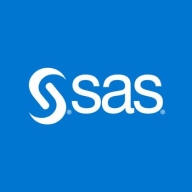


Find out what your peers are saying about Microsoft, Salesforce, Amazon Web Services (AWS) and others in BI (Business Intelligence) Tools.
In a world surrounded by data, tools that allow navigation of large data volumes ensure decisions are data-driven.
Power BI is easy to deploy within an hour, providing robust security against data leaks.
The enterprise subscription offers more benefits, ensuring valuable outcomes.
The significant drawback I notice is that Microsoft's size makes it hard to get specific change requests addressed unless they involve a bug.
We have a partnership with Microsoft, involving multiple weekly calls with dedicated personnel to ensure our satisfaction.
The support is good because there is also a community available.
The tendency to route users to sales personnel with limited technical expertise detracts from the support experience.
They provide callbacks to ensure clarity and resolution of any queries.
You expect only a small percentage of users concurrently, but beyond a thousand concurrent users, it becomes difficult to manage.
With increasing AI capabilities, architectural developments within Microsoft, and tools like Fabric, I expect Power BI to scale accordingly.
As more data is processed, performance issues may arise.
While Oracle OBIEE is scalable, it is more of a niche product designed to work specifically with Oracle systems.
In terms of stability, there's no data loss or leakage, and precautions are well-managed by Microsoft.
We typically do not have problems with end-user tools like Excel and Power BI.
It is very stable for small data, but with big data, there are performance challenges.
SAS Visual Analytics is stable and manages data effectively without crashing.
This makes Power BI difficult to manage as loading times can reach one or two minutes, which is problematic today.
Access was more logical in how it distinguished between data and its formatting.
Microsoft updates Power BI monthly based on user community feedback.
Oracle OBIEE has a steep learning curve compared to tools like SQL Server or Power BI.
In terms of configuration, I would like to see AI capabilities since many applications are now integrating AI.
I found the setup cost to be expensive
Power BI isn't very cheap, however, it is economical compared to other solutions available.
The pricing for Microsoft Power BI is low, which is a good selling point.
Oracle OBIEE is quite expensive, especially when compared to Microsoft's solutions.
In today's data-driven environment, these tools are of substantial value, particularly for large enterprises with numerous processes that require extensive data analysis.
Within the organization, Microsoft Power BI is used to create dashboards and gain insights into data, enhancing data-driven decision-making.
The solution makes it easy for me to develop reports and publish them.
A valuable feature of Oracle OBIEE is its ability to automate some tasks, such as invoice analysis, saving a significant amount of clerical work.
The ability to query information from our Excel data into SAS to view specific data is invaluable.



Microsoft Power BI is a powerful tool for data analysis and visualization. This tool stands out for its ability to merge and analyze data from various sources. Widely adopted across different industries and departments, Power BI is instrumental in creating visually appealing dashboards and generating insightful business intelligence reports. Its intuitive interface, robust visualization capabilities, and seamless integration with other Microsoft applications empower users to easily create interactive reports and gain valuable insights.
Oracle OBIEE (Oracle Business Information Enterprise Edition) is a business intelligence (BI) tool developed by Oracle. OBIEE will gather, store and analyze an organization's network data and compile the information to create reports, dashboard graphs, and performance analysis. OBIEE’s unique platform allows clients to discover new awareness and improve the speed of completing important business decisions by providing robust visual tools and intuitive realization coupled with the latest unmatched enterprise analytics available. OBIEE helps IT enterprise organizations to experience an intelligent view of all enterprise data from across all sources and empowers trusted users with increased levels of reliable, dependable access, interaction, and the ability to utilize the data to increase the overall effectiveness and productivity of the organization.
OBIEE provides unique immediate mobile access, intuitive dashboards, robust reporting, real-time alerts, metadata search, procedure management, direct access to Big Data resources, enlightened in-memory computing, and seamless systems management processes. These features seamlessly combine to make Oracle OBIEE a complete, top-of-the-line broad solution that is cost-effective, minimizes TCO, and provides a competitive, quick ROI for the entire organization.
Oracle OBIEE Top Features
Reviews from Real Users
Sandeep V., Process System Engineer at a comms service provider, tells us, “This solution is very easy for people who are building ad-hoc things. It's an enterprise solution so it can be deployed for a lot of users. There are some great new features that come with the 12c like data visualization, desktop BI Publisher, automation, and interactive dashboards. The product has good features. “
A user who is a CEO at a consultancy relates, “The most valuable feature is the visualization. The data warehousing, data storage, and data wrangling are all features that are in there, and it's one of the better products out there. A good thing is that for large datasets, it's very stable, especially when you have an Oracle database.”
A user who is a Principal Business Intelligence Architect at a computer software company suggests, "It is very biased towards Oracle infrastructure. One of the major red flags we have at the moment against Oracle is that it doesn't support deployment on other cloud providers. We're quite heavily vested in AWS as our infrastructure, and Oracle is yet to formally support deploying on those virtual infrastructure instances. That's quite disappointing, and it also cuts them out of over 70% of the market."
SAS Visual Analytics is a data visualization tool that is used for reporting, data exploration, and analytics. The solution enables users - even those without advanced analytical skills - to understand and examine patterns, trends, and relationships in data. SAS Visual Analytics makes it easy to create and share reports and dashboards that monitor business performance. By using the solution, users can handle, understand, and analyze their data in both past and present fields, as well as influence vital factors for future changes. SAS Visual Analytics is most suitable for larger companies with complex needs.
SAS Visual Analytics Features
SAS Visual Analytics has many valuable key features. Some of the most useful ones include:
SAS Visual Analytics Benefits
There are many benefits to implementing SAS Visual Analytics. Some of the biggest advantages the solution offers include:
Reviews from Real Users
Below are some reviews and helpful feedback written by PeerSpot users currently using the SAS Visual Analytics solution.
A Senior Manager at a consultancy says, “The solution is very stable. The scalability is good. The usability is quite good. It's quite easy to learn and to progress with SAS from an end-user perspective.
PeerSpot user Robert H., Co-owner at Hecht und Heck GmbH, comments, “What I really love about the software is that I have never struggled in implementing it for complex business requirements. It is good for highly sophisticated and specialized statistics in the areas that some people tend to call artificial intelligence. It is used for everything that involves visual presentation and analysis of highly sophisticated statistics for forecasting and other purposes.
Andrea D., Chief Technical Officer at Value Partners, explains, “The best feature is that SAS is not a single BI tool. Rather, it is part of an ecosystem of tools, such as tools that help a user to develop artificial intelligence, algorithms, and so on. SAS is an ecosystem. It's an ecosystem of products. We've found the product to be stable and reliable. The scalability is good.”